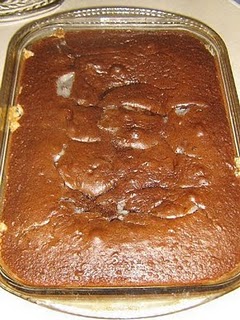Earthquake Cake Dig Copy
Students will use a chocolate earthquake cake to learn processes of weathering and erosion, topography, fossils, molds and casts, and rigor of a geologic dig.
Engaging Questions
-
What could the white portion of the cake represent?
-
Does the top of the cake change elevations?
-
What does each object found represent?
-
Were any of the objects found together or on top of one another?
-
Are any of the objects missing parts or in pieces? How would "weathering" and "erosion" possibly have caused this to happen?
-
Is there a landform nearby that could be compared to the surface of the cake?
Teacher Goals
-
Students will map the topography of the chocolate cake.
-
Students will relate erosion and weathering processes to the topography of the cake.
-
Students will construct quadrants and "dig" for fossils.
-
Students will draw and identify the finds within their quadrants.
Required Resources
-
- Earthquake cake (1 per group of 4 students)
- recipe in teacher's notes
- square aluminum pans
- various food items/candies
- suggestions in teacher's notes
- yarn or string
- tape
- toothpicks (1per student)
-
Use this form with Earthquake Cake activity.
Steps
-
Mapping the top
On a piece of paper, draw the pattern of the white portion of the cake.
-
Drawing your quadrants
On another piece of paper, draw a box and make the four quadrants to look like your cake. Label the quadrants 1-4, starting in the top left corner and moving clockwise.
-
Making the quadrants
Place a piece of string in the middle of one side of the cake. Attach the string to the outside of the aluminum pan with a piece of tape. Stretch the string to the opposite side and attach to the outside of the pan with a piece of tape. This will make 4 squares of cake.
-
Starting the dig
Using only the toothpick, begin removing small sections of the cake. Do this slowly, looking for objects.
-
Mapping the found objects
As each object is found in the group, draw the shape in the quadrant in which it was found.
-
Discussion
Discuss the "Engaging Questions" found in the Teacher's Notes.
Teacher Notes
-

Earthquake cake recipe (1 recipe will make 2 square cakes)
1cup of pecans
1 cup coconut
1 box German chocolate cake mix
1 8 oz. cream cheese
1/2 cup margarine
1 lb powdered sugar
1 tsp vanilla
Mix pecans and coconut and spread into the bottom of the pan. Prepare cake mix as directed on box. Pour over coconut and pecans. Mix remaining ingredients and spoon over cake batter.
-
You may add M&M's, gummi dinosaurs, animal cookies, raisins, and chocolate chips to the cake mix.
It is better to gently lay the items on the batter after the cake is in the pan. This helps to keep the items in all sections of the cake.
-
When M&M's are baked, the color bleeds onto the cake. We let this represent molds and casts. The dinosaurs and the animal cookies represented fossils; chocolate chips were oil deposits; pecans and coconut could be plant remains or conglomerate rocks.
-
Students may consume the earthquake cake after completing the rubric.
-
Substituting generic candies decreased the cost for this lab.